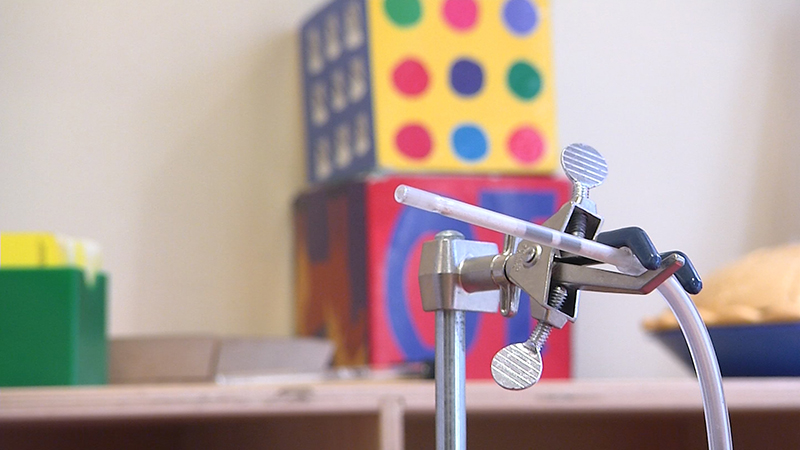
Children spend as many as 10 hours per day and five days per week in child-care and preschool centers. Given the significant amount of time spent indoors, researchers at the University of Missouri are working together to determine how harmful volatile organic compounds, which could be released in the air by cleaning products, school supplies, toys and air fresheners, impact children’s health.
Until recently, measuring air quality in child-care centers has been difficult and expensive. Now the researchers have created a portable, low-cost measurement tool that can efficiently measure air-quality at child-care centers.
“The volatile organic compounds found in the air come from common school supplies, cleaning products, paints, solvents and refrigerants,” said Chung Ho Lin, research associate professor at MU Center for Agroforestry and School of Natural Resources. “Past research has indicated that these compounds might have adverse effects for children, such as triggering asthma.”
Lin and Danh Vu, graduate students in the School of Natural Resources, assembled small air pumps that were able to collect 74 liters of air for analysis. The pumps are connected to a tower that can be adjusted to capture air at several heights. The researchers analyzed the air samples and found 47 of 73 known volatile compounds that have been linked to health issues.
“Children are particularly susceptible to chemical exposure from volatile organic compounds as their heart and respiration rates are faster than adults, meaning they take in more air,” said Gustavo Carlo, professor of human development and family science and co-director of the Center for Children and Families Across Cultures in the College of Human Environmental Sciences. “Moreover, they can be exposed longer and their immune systems are still developing.”
The researchers say that parents and caretakers should not be alarmed by the findings and that efficiently measuring volatile organic compounds in the air is a necessary step for improving air quality. The research team suggests that those concerned about indoor air quality can take several measures to reduce exposure to volatile compounds including opening the windows, using ‘air friendly’ art supplies, installing air filters and avoiding chemical based fragrances and air fresheners.
“While people might think that measuring air quality is simple, it can be quite challenging given that many things—room size, air flow and proximity to doors or windows—can impact the measurement,” Lin said. “We also need to accommodate for children being near the tool and find a way to measure air quality that isn’t distracting to their learning environment,” added Vu.
“Determination of volatile organic compounds in child-care centers by thermal desorption gas chromatography-mass spectrometry,” recently was published in Analytical Methods, a journal of the Royal Society of Chemistry. The work was supported by the MU Center for Family Policy Research, the MU Center for Agroforestry, and the Center for Children and Families across Culture.
Carlo, Lin and Vu are working with a collaborative team of researchers from various departments at the University of Missouri along with the Kansas City Head Start program are working to study environmental impacts on child health. The team includes:
- Jane McElroy, professor of family and community medicine in the MU School of Medicine
- Susan Nagel, associate professor of obstetrics, gynecology and women’s health in the MU School of Medicine
- Francisco Palermo, assistant professor of human development and family science in the MU College of Human Environmental Sciences
- Zehra Gulseven, graduate student in human development and family science
- Phuc Vo, lab technician in the MU Center for Agroforestry
Alexandra Davis, assistant professor at the University of New Mexico College of Education; and Thi Ho, researcher of the Center of Core Facilities in the Cuu Long Delta Rice Research Institute in Vietnam, also contributed to the study.





